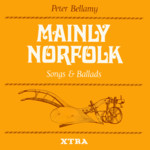> Folk Music > Records > Fyre & Sworde: Songs of the Border Reivers
Fyre & Sworde: Songs of the Border Reivers
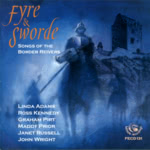 |
Fyre & Sworde Linda Adams, Ross Kennedy, Graham Pirt, Fellside Recordings FECD131 (CD, UK, 1998) |
Produced by Paul Adams and Steve Lawrence;
Musical director: Steve Lawrence;
Recorded, mixed and mastered by Paul Adams;
Assistant record engineer: Richard Adams;
Artwork by Mary Blood
Musicians
John Wright: vocals [1, 7, 14];
Ross Kennedy: vocals [2, 9, 14],
acoustic guitar [2, 9];
Janet Russell: vocals [3, 6, 10, 14],
acoustic guitar [3];
Graham Pirt: vocals [4, 11, 14];
Maddy Prior: vocals [5, 13-14],
harmony vocals [5];
Linda Adams: vocals [6, 8, 12, 14];
Kenny Speirs: harmony and backing vocals [1, 7]
Steve Lawrence: musical director,
acoustic bouzouki [1, 4, 7, 13],
electric bouzouki [1-2, 4-5, 10-11],
acoustic guitar [4, 7, 14],
Scottish small pipes [4],
low whistle [5, 8],
baritone guitar [8, 10-11],
Northumbrian small pipes [],
percussion [10, 13];
Rick Kemp: bass guitar [1, 3-4, 7, 10-11, 13-14];
Richard Evans: Northumbrian small pipes [1, 4, 9, 14],
Scottish small pipes [2, 7, 10, 12];
Richard Adams: drums [1-2, 4, 11, 13-14],
percussion [4, 7];
Paul Adams: bodhrán [1-2],
additional percussion [];
Grame Elliott: electric guitar [2, 7, 11, 13-14];
Ian Kellet: keyboards [4-5, 11, 13-14];
Stewart Hardy: fiddle [8, 11, 14];
Archie McAllister: fiddle [9]
Tracks
- Border Spirit / Lock the Door Lariston (Roud 21732) / Jackie Latin (6.53)
- Kinmont Willie (Roud 4013; Child 186) (5.32)
- The Dowie Dens of Yarrow (Roud 13; Child 214; G/D 2:215) (8.27)
- The Death of Parcy Reed (Roud 335; Child 193) (6.12)
- Dacre’s Gone to the War (3.45)
- The Twa Corbies (Roud 5; Child 26) (1.46)
- The Foray (2.51)
- Sleep My Babe (5.29)
- Hughie the Graeme (Roud 84; Child 191; G/D 2:271) (4.12)
- Lord Maxwell’s Last Goodnight (Roud 4015; Child 195) (4.44)
- The Battle of Otterburn (Roud 3293; Child 161) (5.48)
- The Lament of the Border Widow (Roud 199; Child 106; G/D 1:163) (2.56)
- The Raiders (3.47)
- Peace on the Border (5.40)
Track 1a Billy Pigg arr. Steve Lawrence;
Track 1b James Hogg arr. Steve Lawrence;
Tracks 1c, 10 trad. arr. Steve Lawrence;
Track 2 trad. arr. Ross Kennedy, Steve Lawrence;
Track 3 trad. arr. Janet Russell;
Tracks 4, 11 trad. arr. Steve Lawrence, Paul Adams;
Track 5 anon. / Maddy Prior arr. Ian Kellet;
Track 6 trad. arr. Janet Russell, Linda Adams;
Tracks 7-8 Paul Adams / trad. arr. Steve Lawrence;
Track 9 trad. arr. Ross Kennedy, Archie McAllister;
Track 12 trad. arr. Paul Adams;
Track 13 words Will Ogilvie, music trad. arr. Ian Kellet;
Track 14 Rick Kemp arr. Ian Kellet
The Border and the Reivers
To attempt a potted history of the England-Scotland Border is almost impossible here and so your attention is drawn to the bibliography. The story of the Reivers dates roughly from the late 14th Century and into the late 17th Century. Although it was a Border between two sovereign countries it displayed all the characteristics of a frontier: a lack of law and order, rustling, feuding, murder, pillaging gangs of armed men marauding, plundering etc. etc. The Border itself was almost identical because the loyalties were tribal, although the tendency is to call them clans or, simply, families. You owed loyalty to your blood relatives. Families could straddle the Border as well as feud with their neighbours on the same side of the Border. The most famous names were Armstrong, Maxwell, Johnston, Graham, Bell, Scott, Nixon, Kerr, Crozier, Robson. The songs presented here, as well as our view from almost four hundred years later, have a tendency to romanticise and make the deeds heroic. They were hard people living in harsh times; the worst were barbarous with scant regard for human life or property; the most were ordinary people eking out an existence in a harsh environment. Uniquely the Reiver came from every social class—labourer to peer of the realm. He was a skilled horseman and fine guerilla soldier. He also practised arson, kidnapping and extortion.
Central government of both England and Scotland attempted to establish law and order, and created six Marshes: West, Middle and East, three on each side of the Border. In charge of each was a warden. The wardens varied from those trying to do a good job to those who were part of the reiving activities. A borderer would owe allegiance to England or Scotland when it suited him and likewise to any other family. When England and Scotland were at war it could become very much a Border affair with Reivers providing significant numbers of cavalry. The battles of Otterburn (1388), Flodden Field (1513) and Solway Moss (1542) are inextricably linked to the Reivers.
The Union between England and Scotland in 1603 brought about a concerted effort by James I (VI of Scotland) to rid the Border of problems. Apart from imprisonment and execution for those outside the law there was voluntary transportation to Ireland and the colonies and what was called ‘plantation’ in Ireland where Reivers were given land. Some continued as outlaws and became known as Mosstroopers. Their legacy in the Borders lies in the ballads, words in the English language such as ‘bereave’ and ‘blackmail’ (greenmail was the proper rent you paid, blackmail was ‘protection money’), and the fortified dwellings called pele towers and lesser buildings called bastles. At the time of writing there is a strong argument being proposed for the game of football having started in the Borders, with the Reivers.
Foray: a planned raid, usually at night. The number of men would depend upon the proposed target. Large scale ones could last several days and devastate whole valleys. An account sent to London of a raid on 11 August 1587 reads “400 of E. Tevedale took up Old Bewick and carried away 500 oxen and kyne, 600 sheep, 30 horses and mares. On same night other 40 took away from Reveley and burnt a house, 200 sheep, 30 kyne and oxen, 15 horses.”
Hot Trod: under Border Laws it was permitted for those who had been raided to pursue their attackers. It was the duty of all neighbours between the ages of 16 and 60 to join the ‘Trod’.
Truce: Border Laws allowed for a meeting between the Wardens of opposite Marches to produce criminals wanted by each other and to make reparation. Every man attending was allowed safe conduct. Kinmont Willie was taken on a truce day (“against the laws of the Border lands”).
The Debateable Land: (a stripe of land along the Border east of Dumfries) Identified in 1450 as belonging to neither one side nor the other. Justice was non existent. It attracted all sorts of lawless characters and fugitives.
The Songs
Apart from those specially written, the songs come from what are loosely termed the Border Ballads. It is a misleading title because many of the songs have nothing to do with the Borders as such, but there is a body of songs that relates specifically to the Borders and Reivers in particular.
Where possible we have chosen songs which were actually sung and used melodies associated with them. Whether the texts are always the originals is a moot point. Sir Walter Scott, who published his Minstrels of The Scottish Border in the early 19th Century, was notorious for rewriting ballads. Our purpose here, though, was not to be academic. For those who want to learn more about the ballads there are ways of doing so. In some cases the texts do not fit the historical facts; in some cases the singer has sung a version already in their repertoire which might have textual anomalies. In general it is not important. What we are trying to create is an image through song.
This points up another problem: how to present the songs. Any attempt to recreate some sort of 16th Century accompaniment would be largely inappropriate. Where they existed in the oral tradition they would have been sung unaccompanied. What we have chosen to do is use a mixture of old and new instruments to create an aural image which reflects the songs and also present them to a present day audience.
The singers are all what we term ‘folk’ singers. This serves two purposes: first of all they understand the background of the oral tradition the songs come from and, secondly, they all are used to singing narrative songs—a particular skill in itself.
Why these particular songs? They cover many of the elements of the Reivers story we wanted to illustrate. Many of the traditional Reiving Ballads tell the same type of story in the same way. They are also extremely long. Even the ones we have used here had to be edited to a manageable length without destroying the narrative.
Border Spirit / Lock the Door Lariston / Jackie Latin
This song provides a spirited opening to this collection. It was written by James Hogg, the Ettrick Shepherd. Historically it is a bit of a jumble, but the Border family names and place names help to conjure up the right images for the album.
Kinmont Willie
The events of 1596 and the rescue of ‘Kinmont’ Willie Armstrong represent a daring swashbuckling adventure. The fact that Kinmont led one of the most notorious bands of cut-throats ever to roam the Debateable Land seems to be irrelevant and in the tradition of the Border ballads we are to view him as a hero. His notoriety and activities were such that the Warden of the West Marsh’s deputy, Salkeld, captured Kinmont as he returned from a Truce Day at the Dayholm of Kershope. Kinmont was taken to Carlisle. According to Border Law it should not have happened on a Truce Day and Walter Scott of Buccleuch (keeper of Liddesdale on whose land the arrest had been made) protested to the Warden, Lord Scrope. When Scrope refused to return Kinmont, Buccleuch became concerned that Scrope was anxious to hang Kinmont on the gallows at Harraby and so assembled a motley bunch of Elliots, Scotts, Armstrongs and Grahams to effect a rescue. Oral tradition has meant that the numbers vary from 40 to 200. The weather was atrocious which made crossing the River Eden very dangerous, but it did mean that the castle watch had taken shelter. Buccleuch left a group to cover the retreat and led the raiding party himself. Popular opinion has it that they must have had support from the inside because they entered the castle quickly. Thus with the aid of a sturdy Reiver, Red Rowan, Kinmont made his escape.
The Armstrongs feature in a number of ballads, Jock o’ the Side, Johnny Armstrong etc. which reflects their significance in the Reivers story.
The Dowie Dens of Yarrow
Arguably one of the finest of the Border Ballads. In simple terms the theme is Romeo and Juliet. This fits conveniently with the reiving theme of two families is dispute. It also deals with the theme of the girl courting beneath her station in life. Whatever, the young man is clearly regarded as unsuitable by the girl’s family. As with many of the songs with no clear historical connection attempts have been made to give the song a real-life background. A version of the song collected from one William Walsh, a Peebleshire cottar and poet has as its opening line, “At Dryhope lived a lady fair”. This has led to the theory that the lady was the daughter of Scott of Dryhope, a notorious Reiver. Whether or not it has an historical basis becomes less significant against the overwhelming tragedy of the song. Janet’s text, given to her by Sandra Kerr, has a place name ‘Thurrow’ which we have not been able to locate. The text was collected in the Borders and so it has probably been altered by the oral process from Yarrow. The text has several ritual, magical and folklore allusions: the dream, the long yellow hair being wrapped three times around the body, etc. Janet’s stunning delivery of the song serves to illustrate why these songs are often called the ‘Big Ballads’.
The Death of Parcy Reed
This song takes us over to the Middle and Eastern Marches and into Redesdale. Here again we see cross-Border alliances, in this case the Redesdale Halls joining the Scottish Crosiers (of Liddesdale) against the Reeds, another Redesdale family. Troughend pele tower has long disappeared but was about two miles from Otterburn. Percival Reed, the Laird of Troughend, held the office of Keeper of the District. He had apprehended Whinton Crosier who had been raiding into Redesdale. This put Reed ‘at a feud’ with the Crosiers. The three ‘false Halls’ conspire with the Crosiers to trap Percy Reed whilst on a hunting expedition. Batinghope lies eastwards from Carter Fell and was a noted thieves pass from Scotland. The text of the song is substantially that noted by James Telfer from an old woman named Kitty Hall of Roxburghshire (c. 1824).
Dacre’s Gone to the War
The text of this song was found by Paul Adams while researching Cumbrian local songs and bore the inscription “The Bee published Whiteshaven c. 1820”. Its original title was The Laird of Gilsland. As no melody was identified Maddy Prior gave it one. The Dacre in question is Thomas Dacre, Warden of the English West March and known as ‘The Red Bull’. The ‘war’ in question is the Battle of Flodden Field (1513). As with the Battle of Otterburn the conflict concerned two warring nations, but it was fought in the Borders and reiving families played their part on both sides of the battle and were inextricably entwined in the fortunes of that battle and its aftermath. Tradition has it that Dacre found the body of the Scottish king, James, on the battlefield. When the main English army departed Dacre was left to maintain the frontier—chiefly by fire and sword. Maddy presents the song from the point of view of the womenfolk awaiting the outcome. Dacres were Wardens of the West March and the family seat was Naworth Castle.
The Twa Corbies
The image of two ravens / crows discussing a corpse is one of the most stark and evocative of all the songs associated with the Borders. It conjures up images of the bleak Border fells with its underlying themes of betrayal and murder. The text is stripped bare and its simplicity coupled with the un-accompanied treatment given here reinforces the sheer desolation. We have given the song one Scottish and one English corbie.
The Foray
Most of the songs here deal with specific events and specific characters. This song, written especially for this project by blending material from traditional sources tries to look at the situation from the point of view of the ‘family man’ compelled by blood ties to go on a Foray or Trod. His adrenalin-fuelled fear manifests itself in a certain bravado.
The Reivers had a season which usually started at Lammastide (1 August) because the horses and cattle were fit and well fed from the summer pastures.
Sleep My Babe
This song was also composed specifically for this project. The strong patriarchal society of the Borders and the ‘heroic’ nature of songs has left the woman’s point of view largely unrepresented. The Lament of the Border Widow is an exception. They were hard people living in harsh conditions and often under threat. As in all conflict situations the women and children are not casual onlookers, they are in the middle of it to provide a home, support and comfort on one hand and to toil long hours, be attacked, widowed and orphaned on the other. This song attempts to humanise and bring a little tenderness into a bleak panorama. It uses traditional themes and an old Celtic melody.
Hughie the Graeme
This song appears to be simply a good story with no historical foundation. It has been stipulated that “Robert Altridge, Bishop of Carlisle about the year of 1560, seduced the wife of Hugh Graham” (Stenhouse 1853), but, although Robert Altridge was Bishop of Carlisle there is no trace of a Hugh. It has become well jumbled with the oral tradition, but it is one of the classic songs of its type, representing one of the most powerful of the reiving families. There was a ‘Hutchin’ or ‘Huon’ Graham a notorious freebooter who was one of Buccleuch’s men who rescued Kinmont Willie. He disappeared around 1603, probably transported to Ireland along with other Grahams.
Lord Maxwell’s Last Goodnight
George MacDonald Fraser calls the feud between the Maxwells and the Johnstones “probably the bitterest and the bloodiest family quarrel in British history”. The origins of the troubles are uncertain, but by the middle of the 16th Century the families were sworn enemies. Both families had members who had served as wardens. Their disputes serve to illustrate the way in which the Reivers story cannot be told as simply English versus Scots. The Maxwells and the Johnstones had family ‘territories’ in the Scottish West March. The Johnstones were not averse to enlisting the help of English Grahams, and, similarly, the Maxwells might well call upon Armstrongs, Scotts, Beatties and Littles to aid them.
The events described in verse three refer to the Battle of Dryfe Sands (1593). John, 8th Lord Maxwell, according to legend, having become dismounted, had his arm cut off by one Will Johnstone whilst raising it to surrender. Dumfries is regarded as a ‘proper place’ because a Maxwell traditionally held the post of provost. The song concerns the events of 1608 when a reconciliation meeting was called by the then Lord Maxwell (John) with his Johnstone counterpart. Predictably it went wrong: Maxwell shot Johnstone and as a consequence was forced to flee the country. He returned four years later, was betrayed and executed. There are several ‘Last Goodnight’ songs and the term merely means a ‘farewell’ song. There is some poetic licence here because Maxwell’s wife was dead by this time. It is ironic that such a noble song should come from such despicable circumstances.
The Battle of Otterburn
Although essential an English versus Scottish battle from 1388, it was fought
in the Borders and the main protagonists came from prominent Border families,
Douglas and Percy. It has a place in our collection because it was very much
Border ‘inspired’ and takes account of the fact that the border was between
countries not always at peace with each other. The Earls of March and Douglas,
leading landowners in the Borders urged the Scottish king to renew the
Anglo-Scottish War to take advantage of political uncertaincy in England.
A truce had been drawn up in 1370 for fourteen years and its expiry saw
skirmishing along the Border, much of it instigated by March and Douglas.
The English retaliated, another truce was drawn up, but with political
instability at both the Scottish and English courts attention increasingly
focused on James, second Earl of Douglas and Henry Percy, first Earl of
Northumberland. There were raids into Cumberland and Northumberland and
eventually all lines were drawn for the Battle of Otterburn.
This song is essentially an English version of Chevy Case (Child #162).
Lament of the Border Widow
It is no coincidence that the Reivers gave the word bereave to the English language. The personal strength of the woman in the midst of crisis makes this a very moving song. There are many theories surrounding the historical context of this song. Scott maintained that it concerned “the execution of Cockburn of Henderland, a Border freebooter, hanged over the gate of his own tower by James V in the course of the memorable expedition of 1529 which was fatal to Johnnie Armstrong, Adam Scott of Tushielaw and many other marauders.” Sadly William Cockburn was not hanged “over the gate” but was tried and beheaded in Edinburgh. However, we’ll allow Marjorie Cockburn her grief and supreme nobility in this hauntingly beautiful ballad. Linda originally learnt it from the singing of Gordeanna McCulloch over twenty-five years ago and it has remained in her repertoire ever since. A version was collected in Oklahoma, USA, published in Ballads and Folk Songs of the South West which appeared on an LP complete with remarkably similar melody. In the note to the songs it says “an Oklahoma frontier wife and a Scots Border widow are, in many ways, sisters of circumstance.”
(N.B. ‘poined’ means to seize or make forfeit.)
The Raiders
A poem by the Border poet, Will Ogilvie, and set to a variant of the Border pipe tune, Roslin Castle, makes a fine song. Again it is the rather romantic image of the Border Raid, but the ‘wind of Lammermoore’ and the ‘troop of ghostly men’ create a powerful image.
We are indebted to Mrs Catherine Jeffries for permission to turn her great-grandfather’s verses into a song.
Peace on the Border
Rick Kemp’s song brings us up to date. We to still ‘keep the memory’ of the Reivers, their times and their exploits, but the English / Scottish Border has long been at peace. The same cannot be said of other borders in the world. Whenever and wherever man chooses to draw a line and call it a border, there is a cause for dispute. Draw that line on the basic of ethnic, religious, tribal (clan?) or racial grounds, and the potential for conflict increases manifold. The song attempts to inject a feeling of optimism.
Further References
Bibliography
- George MacDonald Fraser, The Steel Bonnets, Harper Collins
- Godfrey Watson, The Border Reivers, Sandhill Press
- James Reed, The Border Ballads, Spredden Press
- John Marsden, The Illustrated Border Ballads, MacMillan
- Francis J. Child, English & Scottish Popular Ballads, Loomis House
- Sir Walter Scott, Minstrelsy of the Scottish Border, no longer in print
- James Kinsley, The Oxford Book of Ballads, Oxford University Press
Recordings
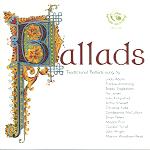 Various Artists:
Ballads,
CD, Fellside FECD110, 1997
Various Artists:
Ballads,
CD, Fellside FECD110, 1997
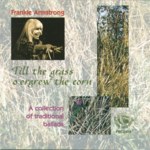 Frankie Armstrong,
Till the Grass O’ergrew the Corn,
CD, Fellside FECD116, 1997
Frankie Armstrong,
Till the Grass O’ergrew the Corn,
CD, Fellside FECD116, 1997
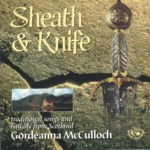 Gordeanna McCulloch,
Sheath & Knife: Scottish Songs & Ballads,
CD, Fellside FECD117, 1997
Gordeanna McCulloch,
Sheath & Knife: Scottish Songs & Ballads,
CD, Fellside FECD117, 1997
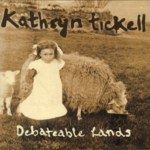 Kathryn Tickell,
Debateable Lands,
CD Park Records PRKCD50, 1999
Kathryn Tickell,
Debateable Lands,
CD Park Records PRKCD50, 1999
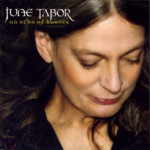 June Tabor,
An Echo of Hooves,
CD, Topic TSCD543, 2003
June Tabor,
An Echo of Hooves,
CD, Topic TSCD543, 2003
Other Media
- CD-ROM: In Search of the Border Reiver, Tullie House Museum, Carlisle, LA3 8TP
- Video: Debateable Lands (In Search of the Border Reiver), Striding Edge Productions, 16 Mercer Drive, Harrietsham, Kent, ME17 1AY
Museums, etc
Tullie House Museum, Castle Street, Carlisle, LA3 8TP
There are numerous towers, castles and places of interest. Tully House can supply information, and also runs a genealogy service.
Acknowledgements
Sleeve notes © Paul Adams 1998
Reproduced with kind permission of
Fellside Recordings

